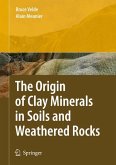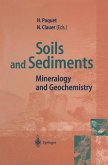This monograph discusses the major problems relating to the surface environment by using clay mineralogy as a unifying theme. Since the stability and development of illite, the most abundant and most common clay mineral, is the key to surface mineral dynamics, understanding its structure and transformation is an absolute prerequisite to understanding the problems of environmental change. Using illite as the frame, the authors describe problems in soil chemistry, clay stability and clay kinetics in sedimentary rocks. This book is valuable for graduate students, scientists and researchers in the fields of sedimentology, sediment petrography and soil sciences.
It is our pleasure to present this large body of information and thoughts of many mineral scientists which has accumulated over decades. Illite is a mineral that has been discovered relatively recently, even though it has great importance in the geological cycles of weathering, sedimentation and burial. Illite is the major potassium mineral among silicates in the surface environment. Potassium represents the only alkaline metal, to be bound in silicate structures during the great chemical reshuffling called weathering. The weathering environment is one of strong chemical segregation, where Si and AI become the resistant, of silicate rocks. Iron forms an oxide and potassium forms residual elements the stable clay illite. Then Si and Al form smectites and kaolinite. Sodium, calcium and to a large extent magnesium are extracted from the solids as dissolved ionic species of the altering fluids. Ca and Mg are reintroduced into solid minerals via carbonate precipitation, and Na remainsto make the sea saline. This mineral has been difficult to study because it is of fine grain size, as are all clays: 2 pm in diameter. Illite, along with other clays, had to wait to be discovered until a useful method of X-ray detection became available. With such a tool clays, whose definition was initially based upon the resolving power of an optical microscope (2 ]. lm), could be efficiently investigated. In fact the study of illite parallels the use and development of X -ray diffraction techniques.
It is our pleasure to present this large body of information and thoughts of many mineral scientists which has accumulated over decades. Illite is a mineral that has been discovered relatively recently, even though it has great importance in the geological cycles of weathering, sedimentation and burial. Illite is the major potassium mineral among silicates in the surface environment. Potassium represents the only alkaline metal, to be bound in silicate structures during the great chemical reshuffling called weathering. The weathering environment is one of strong chemical segregation, where Si and AI become the resistant, of silicate rocks. Iron forms an oxide and potassium forms residual elements the stable clay illite. Then Si and Al form smectites and kaolinite. Sodium, calcium and to a large extent magnesium are extracted from the solids as dissolved ionic species of the altering fluids. Ca and Mg are reintroduced into solid minerals via carbonate precipitation, and Na remainsto make the sea saline. This mineral has been difficult to study because it is of fine grain size, as are all clays: 2 pm in diameter. Illite, along with other clays, had to wait to be discovered until a useful method of X-ray detection became available. With such a tool clays, whose definition was initially based upon the resolving power of an optical microscope (2 ]. lm), could be efficiently investigated. In fact the study of illite parallels the use and development of X -ray diffraction techniques.








